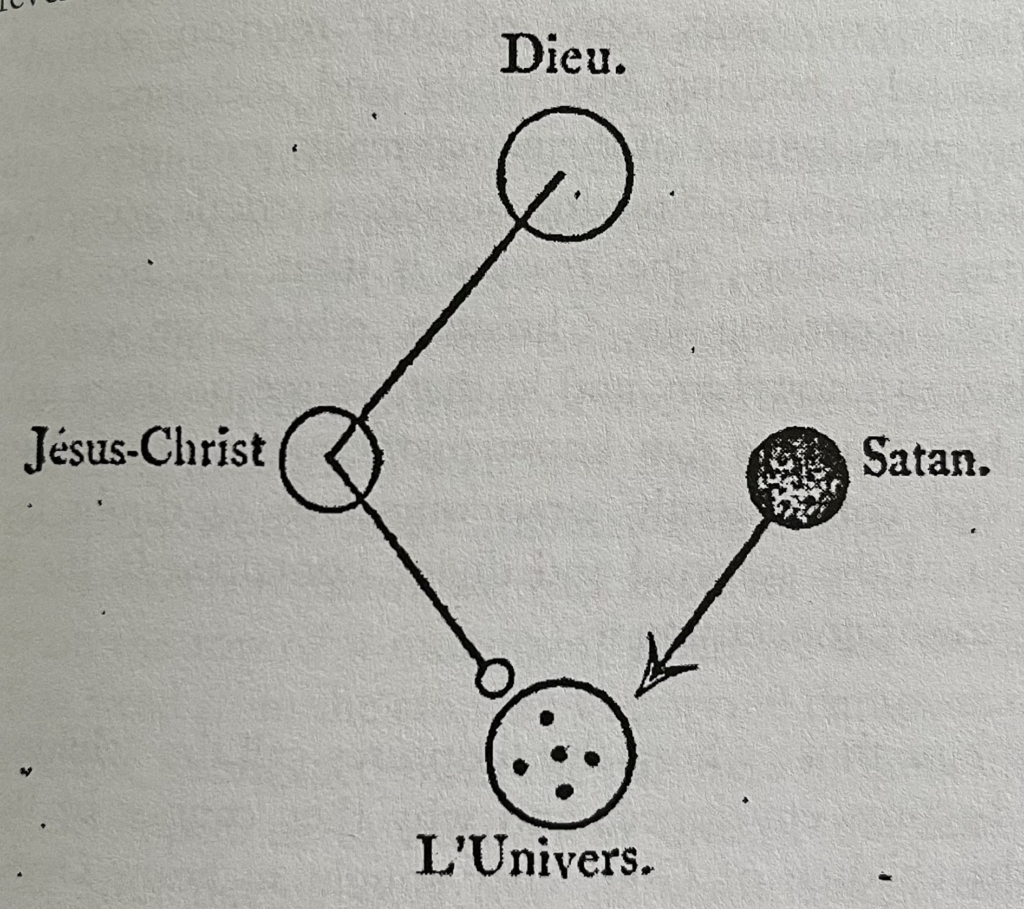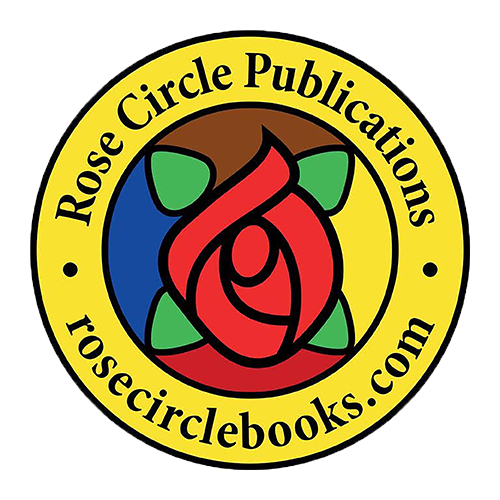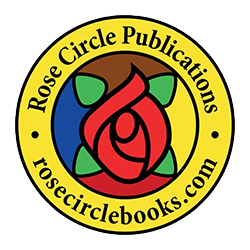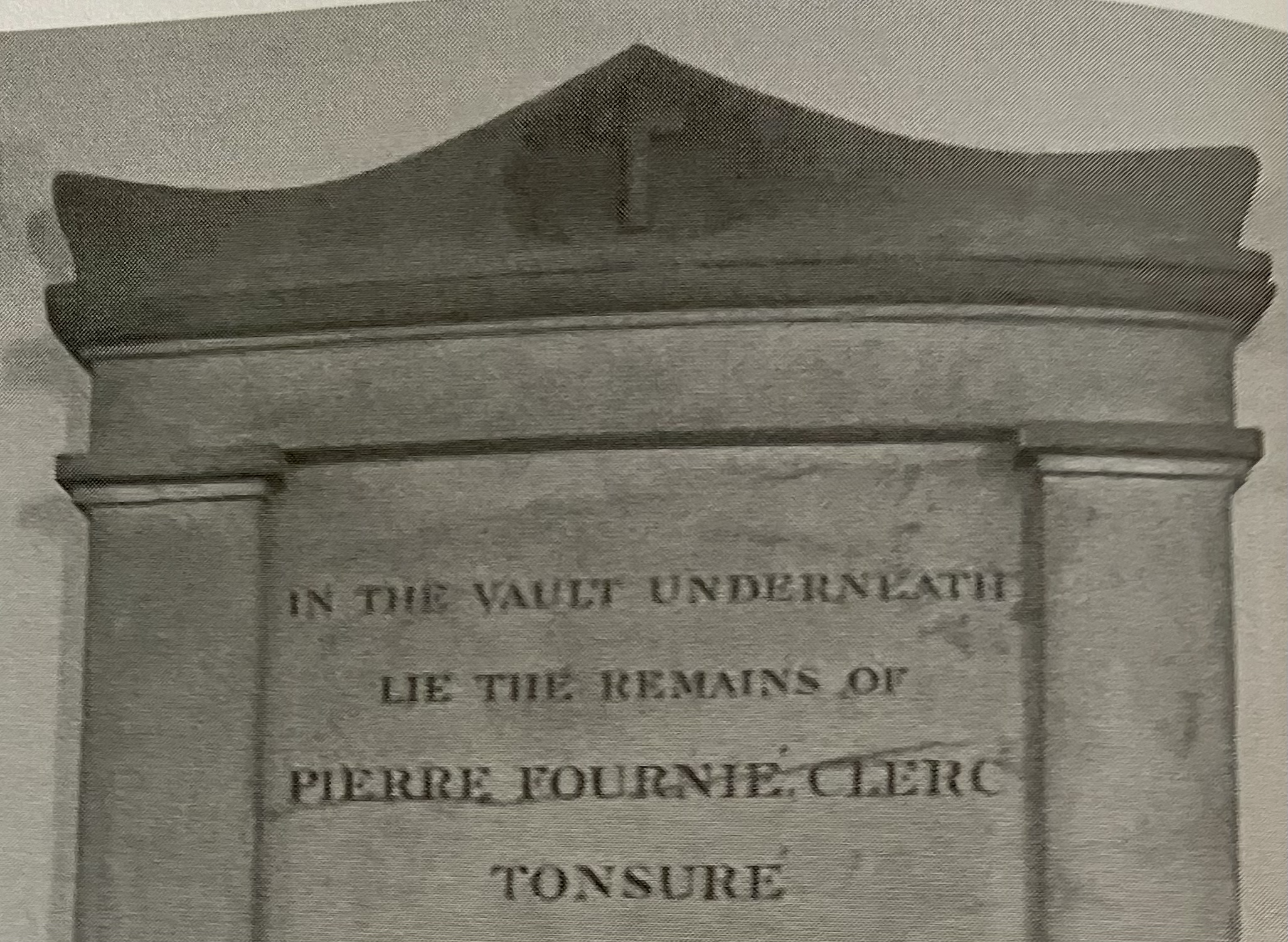Abbé Fournié: What we have been, we are, & we will become
It is wonderful to see this much sought-after volume finally available to the English-speaking world. While the rituals of the various Orders of that time make for a fun and sometimes exciting read (particularly the parts with cadavers strewn around the room!), without a good grasp of the background philosophy behind them and how these rituals were viewed by their practitioners, only a superficial understanding can be gained. That is why books like this are so important.

We are indebted to Michael Osborne for providing this translation for us. However, I would add that the Translator’s Introduction alone is worth the price of entry. Well-researched and well-written, it covers not only the historical period and events surrounding he appearance of the book, but also gives insight into the sources which provided input into the book, which he published some 26 years after he began writing. He goes on to give a summary of the Doctrine of the Elus Cohen, before giving us an understanding of Abbé Fournié’s interpretation of that doctrine. There are also a number of interesting illustrations pertaining to Fournié’s life in the center and back of the book.
Abbé Fournié was Pasqually’s secretary the year prior to Saint-Martin, and from his correspondence with Willermoz and his Elus Cohen in Lyon, it is apparent that the Abbé shared his ideas with all the major players in this movement, honing and polishing his theosophy with input from these and other luminaries of the time.
Fournié’s book itself must be read as a source document. By this I mean one must remember that the book is quite focused on one message: that the only way to seek successful reintegration is through the practice of Christian ethics. While this might seem obvious for an Order based on the Christian religion, two things become immediately apparent: that he is speaking as a member of the clergy, and therefore more orthodox in his mapping of Pasqually’s teaching onto mainstream Catholicism than, say, Saint-Martin; also, that he is constrained by his position in the Church from saying anything too outlandish (although his less traditional ideas leak through occasionally). He may indeed have taken counsel from the fact that Saint-Martin’s first book had been placed on the Index Librorum Prohibitorum for a time by the Sacred Congregation of the Index, and determined to err on the side of safety.
As a source document it is interesting to compare his approach to ‘Christianizing’ Pasqually’s message to that of Saint-Martin. While Saint-Martin is free to criticize the established Church as he sees fit, calling out a corrupt priesthood which is driven by money and laziness rather than by a vocational imperative to share the Word of God, Abbé Fournié is forced to be far more circumspect, and focuses most of his efforts on reconciling the teachings to Catholic dogma. As Pasqually’s Secretary it is clear, too, that the flow of education wasn’t just one way: the very fact that he was a cleric (and a Mason) tells us that the Abbé likely had a significant input into the formulation of the teachings underpinning the Elus Cohen in his regular conversations with Pasqually at the founding of the Order. He has some interesting images to share with us, such as the prevarication of Man being associated with the two trees in the Garden of Eden, and the setting of the Path of Return firmly in three locations: Earth, Purgatory and Heaven. He also develops the notion that we live apart from God in a prison of time and space by stating that it is on Judgement Day that we will see everything return to a state unbound by temporal or spatial constraint. And he is adamant that we must all “…reunite ourselves with the Church founded by Jesus Christ on St. Peter.” So, here he states categorically that the only way to reintegrate is through the Roman Catholic Church (and as a sign of the times in which he lived, extends this imperative to the Judaic and Moslem religions as well). It is also to be noted that he uses no euphemisms for Jesus, such as Héli or the Repairer, which again keeps the focus entirely on the Son of God, while stressing that He replaced man in the center of the universe to show us the Path of Return.
On the other side of the coin, we can detect the influence of his conversations with Saint-Martin and Willermoz can be noted in the homage when he says: “..we must strive by the practice of Christian ethics to comprehend the weight, number and measure of our iniquities…” Also telling is the fact that, despite his clarion call in favor of the Roman Catholic Church, only a few pages earlier he states: “it is high time for us to think in earnest about returning to the Church, that is to say, to the practice of the teachings of God.” [Italics mine]. This sidesteps the need to provide a definition of what ‘Church’ he is talking about, and indeed he doesn’t say this entails visiting church, going to Mass, giving Confession or living within the confines of Catholic dogma, but simply to practice the teachings of God: in this instance he aligns far more closely with Saint-Martin, who says that the true teachings come directly to us from the primitive, or pre-Nicene Church, and that the Catholic Church of his time had lost sight of them. Given how carefully he crafts all his other arguments, I like to think this is a small incidence of his anti-clerical rebellion in the book.
While this is a brief review, we cannot leave Fournié’s writings without saying we also see a lot of the man in his book! He makes no effort to hide his emotions in his words: frustration, envy, pride, annoyance, joy. Nowhere is this more evident than in his near-constant lament that there are so many people who ridicule the Church, its teachings…and him. You can sense the frustration of someone who was clearly quite traditional in outlook (if a little funky in his personal theological beliefs such as on Magnetism, and seeing dead relatives wandering around his house talking with him regularly), who detests having to justify himself all the time against the Encyclopedists and all the other people pushing back against religious control.

What is both exciting and frustrating is the knowledge that there is a second volume out there. Given that the first volume was published in England, there is every reason to assume that the manuscript exists somewhere in the UK. Although this is pure speculation, the first volume feels as if it is setting the scene for a more practical second one. One clue is the fact that it is only at the very end of volume one that Fournié mentions his close association with Pasqually, as well as his devotion to certain works of Mme Guyon, which for me hints at the possibility that these mentors are being introduced prior to a far more practical volume on how to practice Christian ethics, which might even contain some of Pasqually’s practices? Sadly, we won’t know unless the ‘wisdom of future generations discovers and brings to light’ this long lost volume.



No Comments